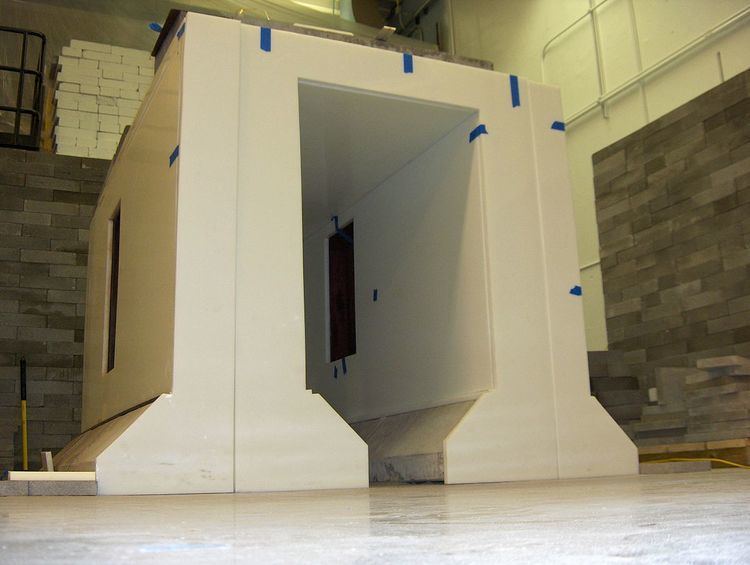 | ||
The Neutron Science Lab (NSL) at the University of Michigan was created to house a D711 neutron generator purchased by the Department of Nuclear Engineering and Radiological Sciences (NERS). The lab exists on North Campus at the university, and is a part of the University of Michigan College of Engineering.
Contents
History
The NERS Department previously had use of the Ford Nuclear Reactor at the Phoenix Memorial Laboratory. In 2003, the Ford Nuclear Reactor was shut down, and decommissioning operations began. A neutron source was still required for instructional and experimental use, so in 2004, the NERS Department purchased an MP320 neutron generator from Thermo Electron Corporation (USA). A decision was made to have a dedicated facility for a neutron source, and in 2006, the first deliveries of components for a D711 neutron generator from Thermo Electron Corporation (USA) were made to the department. Final installation and operation of the D711 neutron generator is scheduled for May 2007.
D711 Neutron Generator
The D711 neutron generator manufactured by Thermo Electron Corporation (USA) produces 14.1-MeV neutrons by accelerating a beam of deuterons into a tritium-containing target. Fusion of the deuterium and tritium atoms occurs, creating 4He and a neutron. This reaction has a Q value of 17.586 MeV. Q-value is the difference between the mass of a decaying particle and the sum of masses of resultant particles, thus, this value indicated the generation of neutrons that are more energetic than the corresponding deuteron projectile. The maximum output is quoted at 2·1010 neutrons per second.
Regulatory Limits
The State of Michigan of Community Health(MDCH) is the regulatory body to which the design of the NSL must comply. MDCH limits Class AA installations public exposure to be less than two millirem per hour, measure 5 cm from any accessible external surface point, while the accelerator is operating at maximum radiation output. Therefore, the design team's was to limit the dose to less than 2 mR/hr at any external wall of the test cell by optimizing the dose rate at the cave. The National Council on Radiation Protection and Measurements Report No. 144, “Radiation Protection for Particle Accelerator Facilities,” provides guidelines for the safety design, including shielding, facility planning, safety systems and other considering for accelerator facilities such at the D711. NCRP 144 also recommends a maze be used to protect users from excess exposure for neutron generators with output greater than 10 MeV. The design team spent a great deal of time addressing this directly with the construction of a complex maze, with several automatic and manual safety devices.
Shielding Design
The original housing for the neutron generator consisted of a prefabricated concrete “cave”. The cave is about 3 m in length and 1.5 m wide and has two windows on either side. The walls are about 35 cm thick. Running the D711 inside the cave would produce a dose of about 10 Rem/hr inside the test cell. The goal of the NSL design team was to reduce this to about 10 mRem/hr by adding additional shielding to the cave.
By using MCNP to simulate the cave and surrounding room, it was determined that 2.5 cm of polyethylene lining would be added to the inside and outside of the cave to help thermalize the neutrons. In addition, another 60-cm thick wall will be built of concrete blocks around the entirety of the cave. This presented a structural risk on the roof. An angle plate was used to help support this load. The floor was also lined with 5 cm of polyethylene to reduce scatter from the floor. This reduced the average dose on the surface of the cave below 10 mRem/hr. “Hotspots” still existed at the points closest to the source, but they were less than 50 mRem/hr, well within the 100 mRem/hr regulation.
